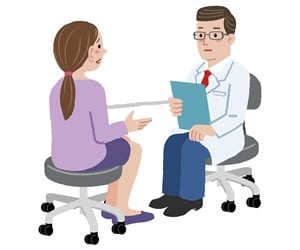The tradition of long hours on the floor is an old one in American medical training. And criticism of this tradition is of long standing too. The controversy over the grueling residency schedules is not a new one, but neither is it one that has been successfully resolved. It can still spark off strong feelings in both the proponents and opponents of cutting back on the length of residency shifts and/or the time off between shifts for professionals engaged in this important stage in their medical education. What’s more, it is a topic which has pitted respected healthcare institutions such as the Harvard School for Public Health and the American Academy of Family Physicians against one another, so much so that this issue is not likely to be resolved anytime soon.
mental health
Junior Doctor Stress and What Can be Done about It
Junior doctors [and residents in the US] do a valuable and sometimes life-saving job for patients. They are the future in medicine and can bring enthusiasm and fresh ideas into the profession. Despite the importance of their role to society, junior doctors have sky rocketing stress levels and many have an appalling state of mental health.
The Shocking Suicide Rate Among Doctors
It is totally shocking that in the 21st century, so many bright young doctors fall prey to depression and around 400 US physicians intentionally end their own lives annually. This means that every year in America, a million patients lose their doctor to suicide. The chance of dying by suicide is greatly increased for those in the medical profession compared with ‘lay’ people. For instance, male doctors have a 70% increased risk of dying as a result of suicide, when comparing the death rates with men from the general population. One of the reasons there are more completed suicides – ironically – may be as a result of doctor training. Doctors know the human body intimately. They know about drug dosages, they know more about the effects of drugs on the body. They know how to save a life and because of this, how to take one. A determined doctor can calculate a fatal drug dose expertly or know where to cut that would be catastrophic. They also have access to powerful, death dealing drugs that are only available on prescription to the rest of the population. This may be why there are so many successful doctor suicides each year.
What You Should Know: Talking to Your Patients About Their Mental Health
Even student doctors who have not yet completed all of their medical training have probably realized that awkward, difficult or delicate conversations are part and parcel of a physician’s practice, and for a number of different reasons. Few conversations you will likely to have with your patients can feel more uncomfortable–for patient and doctor both–than those involving a patient’s mental health. Despite energetic advocacy for the mentally ill in recent decades, the stigma of mental illness remains and many patients may feel embarrassed, upset, or ashamed to discuss these issues with their healthcare providers. A doctor who is comfortable with this topic and can put their patient as ease, however, can more easily screen patients for mental health disorders and, more importantly, get them referrals and contact with community resources that many of them so desperately need.
But how do you start this conversation?
Self-Care in Medical School: A Lesson from the Heart
As a first-year medical student only a few weeks into gross anatomy, I still have … Read more
You're Not Alone: Mental Health Issues During Medical School
Confidential help is available for the upwards of 1 in 4 medical students who meet the criteria for depression.





